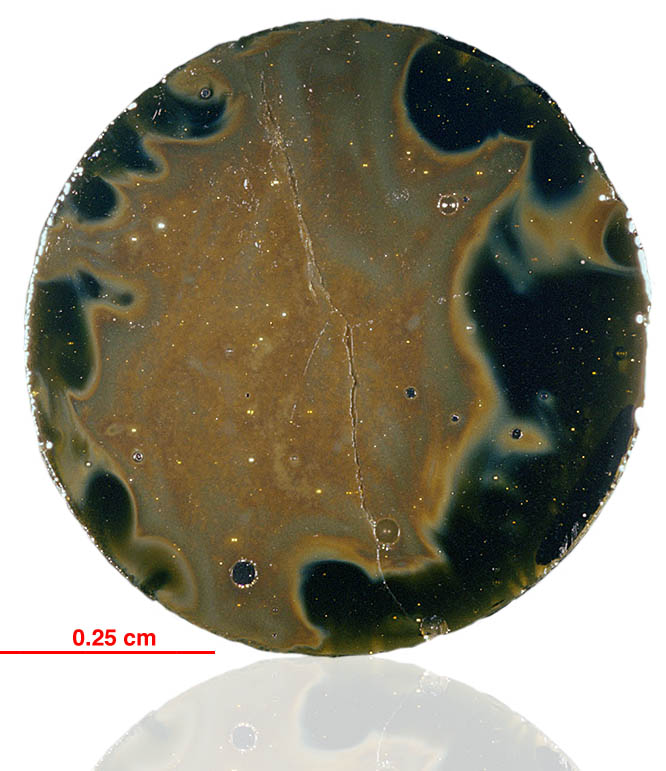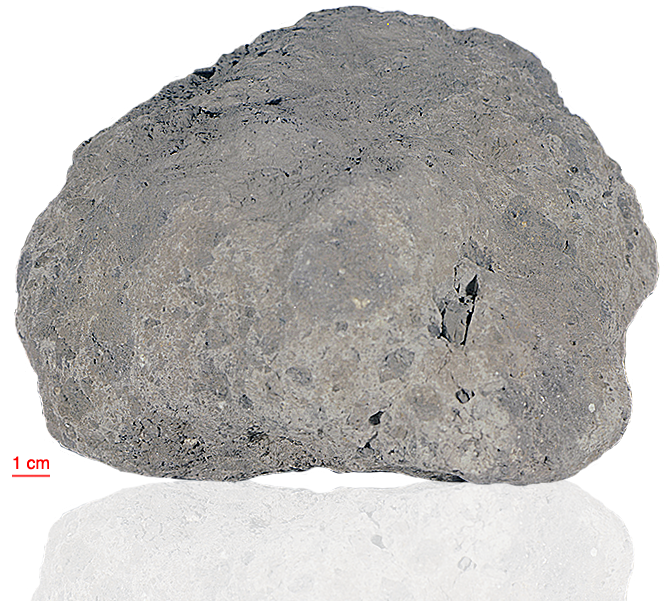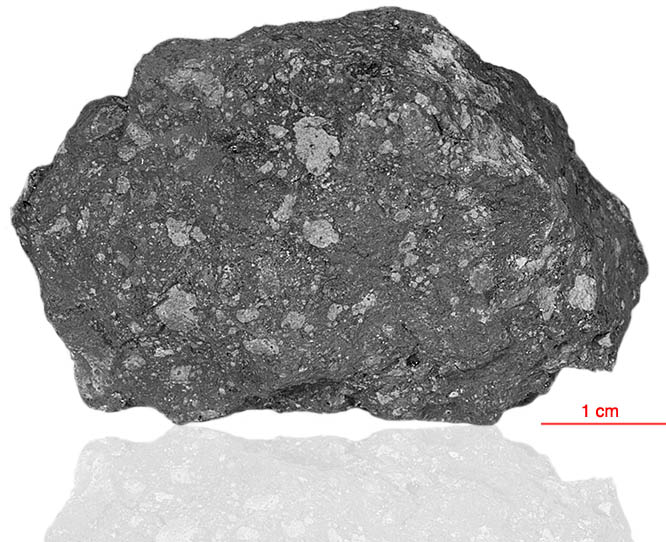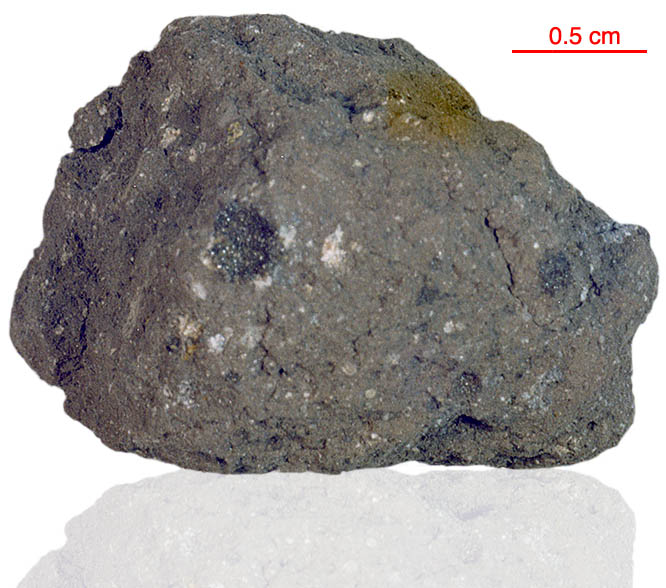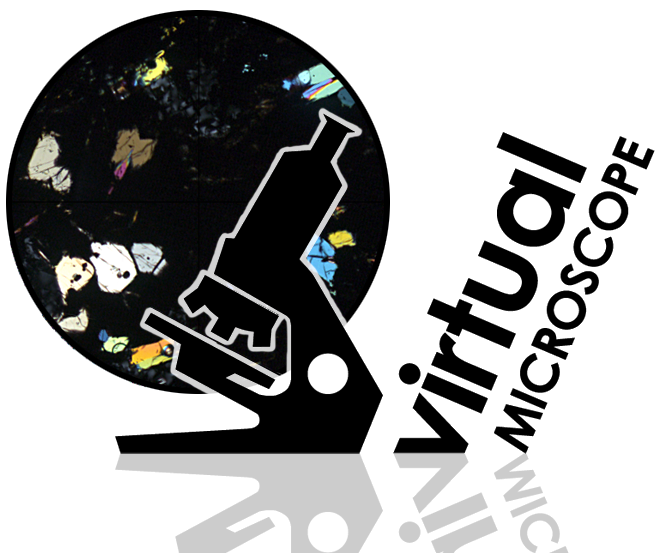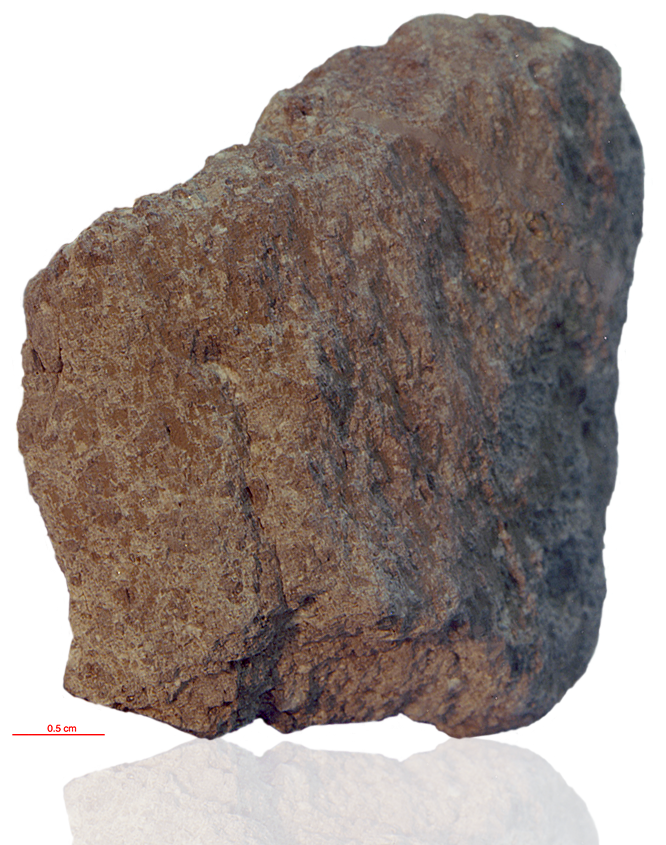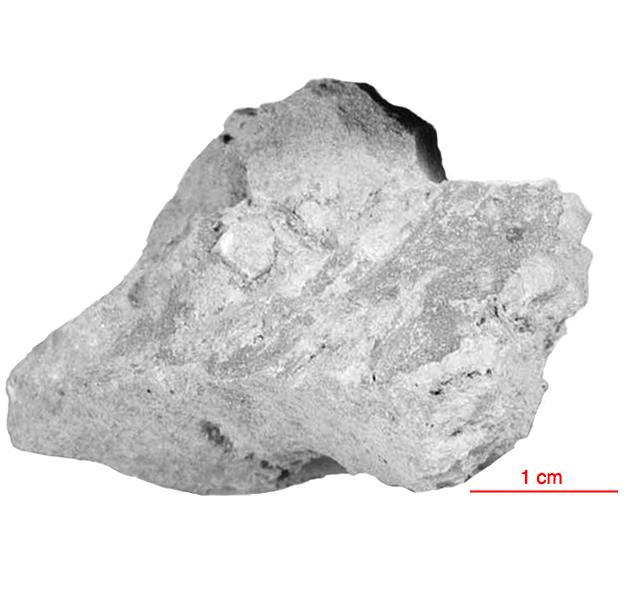
Fact sheet
14068 is distinctly different from other Apollo 14 breccias. Round vesicles indicate that the groundmass was once a melt, but it has subsequently quenched to a microcrystalline basaltic texture. The sample is Mg-rich and has abundant metallic iron grains. Unusually, some of the larger crystals in the melt are rounded. The matrix of 14068 is holocrystalline with needles of Mg-rich olivine crystallites. There are a wide variety of mineral and lithic clasts. The texture is that of a rapidly quenched igneous rock. The matrix is olivine rich and the clast assemblage is unusual, with numerous relics of K-rich material.
The sample weighed 35.07 grams before analysis and is 3.73±0.04 billion years old (Ar/Ar).
The mounting resin of this thin section has deteriorated over time and now contains clusters of feathery crystallites within and around the margins of the thin section.
Further details of this and other Apollo samples are here: http://curator.jsc.nasa.gov/lunar/
The Apollo 14 landing site was in a region formed by impact-basin debris.
Most of the 42 kilograms of rocks and soil collected on Apollo 14 are breccias (rocks that are composed of fragments of other, older rocks). In some cases, the rock fragments that form a breccia are themselves breccias. Such rocks obviously have experienced complex histories with multiple generations of impact events. Some breccias were heated enough that some of the material in the rock was melted.
Apollo 14 was launched on 31 January 1971.

